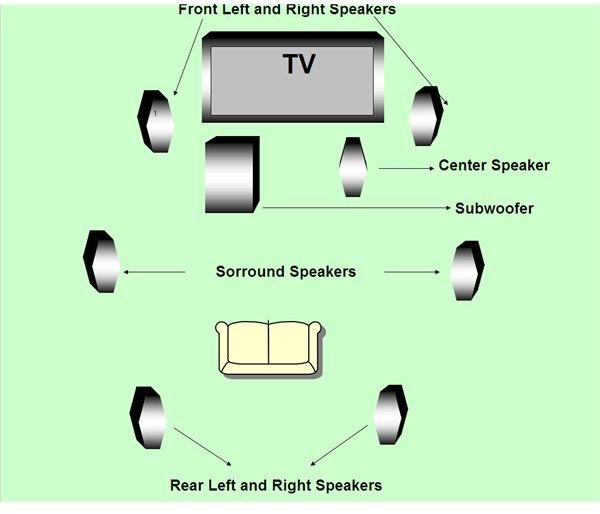What is Dolby Digital Plus?
Based on the Dolby Digital technology, Dolby Digital Plus promises a better home theater surround sound experience with its new algorithms. Spectral efficiencies and added channel capabilities earn it a higher score above its predecessors - namely Dolby Digital EX and Dolby Digital. It uses the Enhanced AC-3 audio codec, which provides excellent support for a range of evolving media, including mobile phones, laptops, IPTV, Satellite TV and online streaming. Let’s take a detailed look at what all of this technology has to offer.
Features and Benefits
Enhanced Compatibility: Digital Dolby Plus offers a cinematic audio experience from a range of modern media channels like PCs, mobiles, satellite receivers, cable and online streaming. It’s a much preferred audio technology where low bandwidth consumption is as important a priority as the sound output quality. This is espeically true in the case of IPTV, or DBS. Its spectral coding efficiency facilitates delivery of multichannel soundtracks at reasonably lower bit rates, while still keeping up the audio quality intact.
Added Channels: Enjoy a more realistic surround sound experience with its 7.1 discrete audio channels, This includes two added channels which provide ambient sound to create a sense of spaciousness. These two extra channels are meant for audio that adds a certain width to the sound experience, like the reactions of the spectators during a sports event. Accordingly, these speakers are placed on either side of the audience. On the higher side, it can also support up to 15.1 discrete audio channels, if the need for such a high number of channel arises sometime in the future.
Easier to Connect: Connecting it becomes fairly convenient using a single HDMI cable (supports HDMI 1.3 and higher) to transmit both 7.1 discrete audio channels and HD video - without any compromise in the quality of the output. However, if your receiver doesn’t support HDMI 1.3 capabilities, you will have to use coaxial or optical digital connections which will compromise the true Plus experience.
Improved Encoding and Higher Bit Rate: The E AC-3 audio coding allows encoding of media at bit rates as high as 6144 kbps, which is roughly 10 times the bit rate supported by Dolby Digital. A high bit rate means less compression of the audio, and ultimately translates into better sound quality. For HD DVD and Blu-Ray Discs, the bit rate is capped at a maximum of 3.0 Mbps and 1.7 Mbps. On the other hand, if bandwidth is at a premium, you can still trust this technology to deliver the best surround sound even at lower bit rates.
Backward Compatibility: Dolby Digital Plus technology is completely backward compatible with most of your existing Dolby Digital playback and home theater systems, as the sound is automatically down-converted to the Dolby Digital format. You don’t need to upgrade your hardware, or decode and re-encode, to play Dolby Digital Plus programs.
Additional Capabilities:
- Some of the advanced systems with Dolby Digital Plus technology also come with interactive streaming and mixing capabilities.
- It has enhanced viewing options that offer audio descriptions, along with the surround sound for people who are visually impaired.
- Plus supports metadata parameters such as dynamic range control and dialogue normalization, to give you a consistent quality audio experience.
- It also supports some interactive feature of Blu-Ray disks such as BonusView and BD-Live.
- Windows 7 also now comes with full Dolby Digital Plus support.
Speaker Placement for its 7.1 Channels
To experience the real fun of Dolby Digital Plus, the most important thing is the right placement of its 8 audio channels. Here’s an image that will help you setup the speakers, and put the woofer in the right place to enjoy the best surround sound effect.

In addition to following this diagram, some of the other details that must be taken care of at the time of the setup are:
- The front left and right speakers should be placed equidistant from the TV, and likewise for the remaining pairs of speakers.
- The subwoofer can be placed anywhere in the room, because it has an omni-directional sound output. Avoid placing it in a corner, as it can make the output sound too heavy.
- As far as possible, all of the speakers should be placed at ear-level height.
Keeping in mind the radically changing audio-video delivery and storage systems, Plus is designed not just for the present, but also competent to face the challenges of the future. It’s already mandatory for HD DVDs and a lot of streaming media, as Blu-Ray discs and broadcasts are coming with Dolby Digital Plus audio. If you’re considering upgrading from Dolby Digital to Dolby Digital Plus, you will make an investment that will last for many years to come.